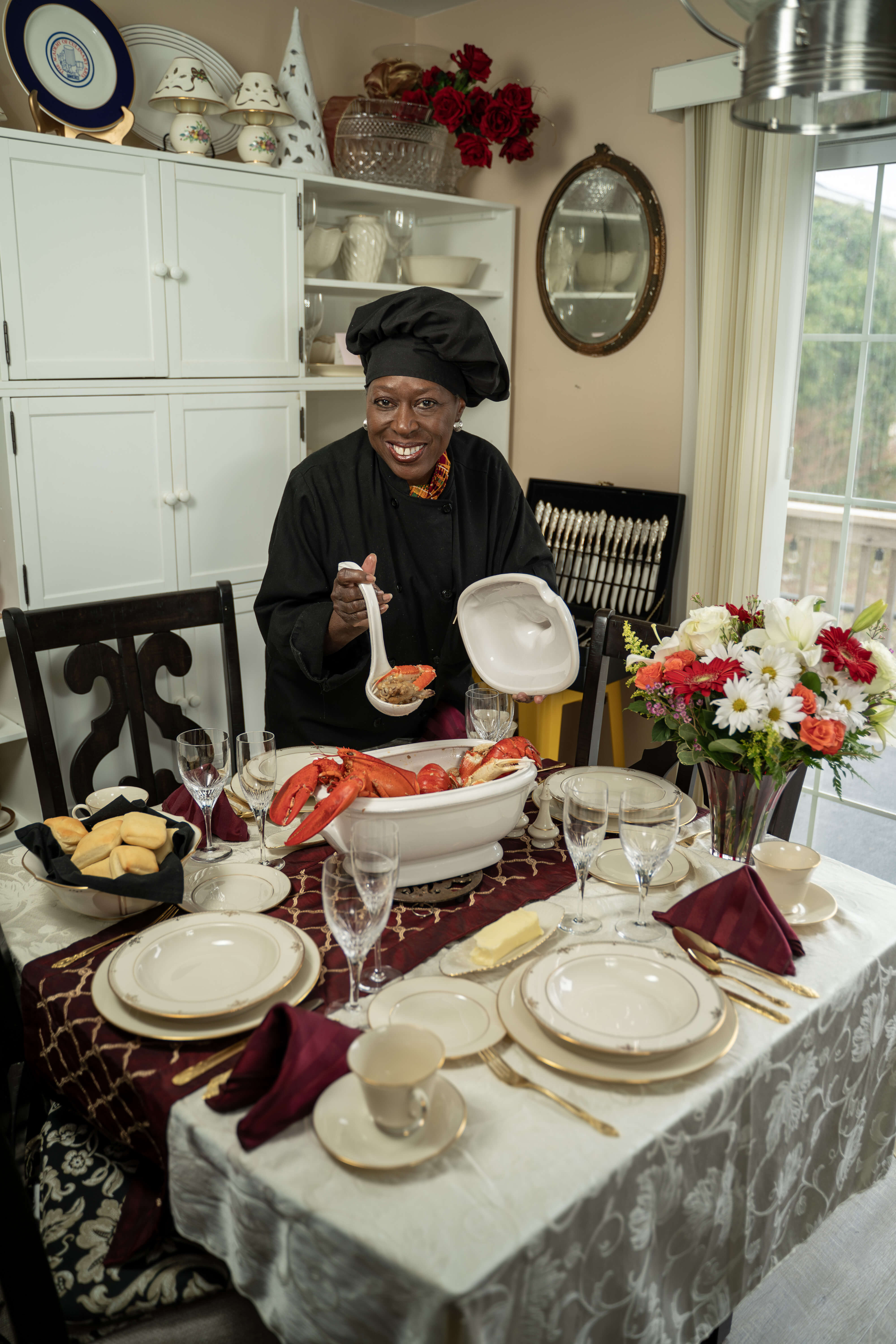
Honoring Tradition, Nourishing the Future
Chef Michelle Washington Wilson’s new research and storytelling project aims to preserve South Jersey’s Black culinary folk traditions for future generations.
Many of America’s best recipes don’t come from cookbooks, food blogs, or cooking shows. They are passed down through generations, seasoned with a pinch of this, a dash of that, and kept alive through storytelling. With support from a prestigious New Jersey State Council on the Arts grant, folklorist and chef Michelle Washington Wilson ’77 is documenting and preserving these traditions, focusing on the culinary heritage of African American farmworkers who came to New Jersey in the 1950s and ’60s.
Wilson’s epicurean journey started long before she attended culinary school. At just 10 years old, she worked in the blueberry fields of Hammonton, New Jersey, alongside American migratory workers who traveled state by state, crop by crop, up the East Coast. By age 11, she was already cooking for her younger siblings, earning praise from her family for her natural talent in the kitchen.
As she grew older, Wilson discovered a gift for storytelling and excelled in individual speech events as part of Monmouth’s speech and debate team. She became a speech and theater education major, appearing in such campus productions as “Hair”— and hosted an annual soul food breakfast for her theater friends.
We don’t often think about or interact with those who pick our crops, but it’s important to appreciate and remember their stories and traditions.
After marrying and having two children, Wilson decided to pursue formal culinary training at the Academy of Culinary Arts in Mays Landing, New Jersey. There, she gained skills in baking, international cuisine, restaurant management, and catering. However, she noticed a significant gap: There was no instruction on soul food, the cuisine she had grown up watching people prepare in South Jersey. “Having the freshest ingredients is extremely important for any chef, but that means someone has to go out there and pick them,” Wilson says. “We don’t often think about or interact with those who pick our crops, but it’s important to appreciate and remember their stories and traditions.”
Wilson’s project, “With These Two Hands: A Comprehensive Plan for Preserving and Sharing African American Culinary Traditions in South Jersey,” will document the stories, recipes, and cooking methods of those who fried fish, smoked meat, cooked collard greens, and baked flaky biscuits from scratch. “Farm-to-table gets a lot of attention today,” she says. “But my focus is on farm-to-farmworkers’-tables—the people whose labor brought fresh ingredients to our plates.”
Drawing on her experience as a member of the National Storytelling Network, New Jersey Storytelling Network, and National Association of Black Storytellers, Wilson plans to interview chefs, storytellers, professors, home cooks, farmworkers, and other community mentors. Through these conversations, she hopes to piece together the traditional cooking methods, recipes, food traditions, and ways of life that define Black culinary heritage in South Jersey. “These are the people who brought the flavors, memories, and resilience of our ancestors to South Jersey,” she says. “It’s so important that the voices of the people who came before us are heard and remain in the community.”
A Taste of History

Every dish tells a story, and one of Michelle’s favorite soul food recipes is steeped in tradition. Her grandmother, Velma Brown, was born on Christmas Eve and celebrated each holiday birthday with a steaming pot of her signature gumbo. Wilson, born just after New Year’s Day, continues the legacy, making this soul-warming stew her go-to birthday treat. Now, she’s sharing her grandmother’s recipe, inviting everyone to stir up this hearty dish and savor the flavors of a tradition that spans generations.
Grandmom Brown’s Birthday Bash Gumbo
Serves 8-12 (8-ounce servings)
Ingredients:
» 2 sticks butter
» 1/2 cup all-purpose flour
» 1 pound Andouille sausage, sliced
» 1 pound boneless, skinless chicken thighs, cut into bite-sized pieces
» 1 pound boneless, skinless chicken breast, cut into bite-sized pieces
» 4 chicken wings, cut into wingettes, pre-cooked
» 1 pound cooked turkey meat (light and dark) cut into bite-sized pieces
» 1 smoked pork chop (or 1/2 pound of smoked ham)
» 1/2-pound beef filet or ribeye, cut into bite-sized pieces
» 1 pound fresh salmon, cut into large chunks
» 1 1/2 pounds shrimp, peeled and deveined (a must-have; other seafoods are optional)
» 1 whole lobster (claws left whole but cracked open, steamed, and 2 extra lobster tails, cut into chucks in the shell; reserve the stock)
» 1 pound of cooked crab legs, split for easy access
» 2 cups lobster stock (lobster base can be used)
» 2 cups chicken stock
» 1/2 teaspoon cayenne pepper
» 1/2 teaspoon black pepper
» 1/2 teaspoon coarse kosher salt
» 1 tablespoon filé powder
» Cooked white rice or cooked grits, for serving
Instructions:
» Make the roux: In a large pot, melt the butter over medium heat. Gradually add in the flour to form a roux, stirring constantly, until the mixture turns a light brown color and is the consistency of wet sand (about 10 minutes).
» Cook the sausage and chicken: Add the sliced Andouille sausage and chicken pieces to the pot. Cook until the chicken is browned and cooked through (about 10 minutes).
» Add more meat: Add beef, ham/pork, turkey, or whatever other meats that you like—I use them all.
» Simmer: Pour in the chicken stock and lobster stock. Add the cayenne pepper, black pepper, filé powder, and salt. Bring the stock to a boil, then reduce the heat and let it simmer (for about 45 minutes, stirring occasionally).
» Add the prepared seafood: Add the crab legs, salmon chunks, and cooked lobster (cut into serving-sized pieces; the head can be reserved for garnish).
» Add shrimp: Add the shrimp to the pot and cook until they are pink and cooked through (about 5 minutes).
» Serve: Serve the gumbo over cooked white rice or cooked hot grits.